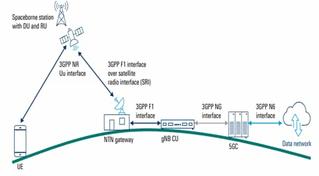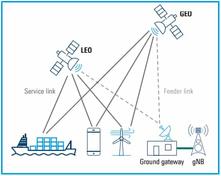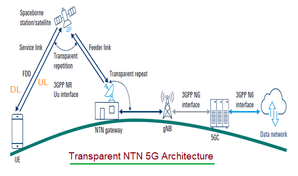Difference between Handheld UE vs VSAT
Advertisement
This page distinguishes between two main types of user terminals used in 5G NTN.
Handheld UE: A device comparable to a standard smartphone or a small IoT device. It is assumed to have a maximum transmit power of 23 dBm and a low gain omnidirectional antenna.
VSAT (Very Small Aperture Terminal): A larger, primarily stationary or vehicle mounted terminal. It is assumed to have a much higher transmit power (e.g., 33 dBm) and a high gain directional antenna (e.g., a phased array or parabolic dish).
Key differences
| Feature | Handhelp UE device | VSAT |
|---|---|---|
| Form Factor | Mobile, handheld, Small | Stationary or mounted on a platform, Large in size |
| Antenna Type | Omni-directional | Directional |
| Antenna Gain | Low (e.g. 0 dBi) | High (e.g. ~40 dBi) |
| Polarization | Typically Linear | Typically Circular |
| Primary use case | Mobile Satellite Services (MSS), IoT-NTN | Fixed Satellite Services (FSS), Backhaul, Mobility on platforms |
Summary: VSATs have significantly higher power and antenna gain, enabling better performance, while handheld UEs are designed for mobility with lower RF capabilities.
Advertisement
 RF
RF

